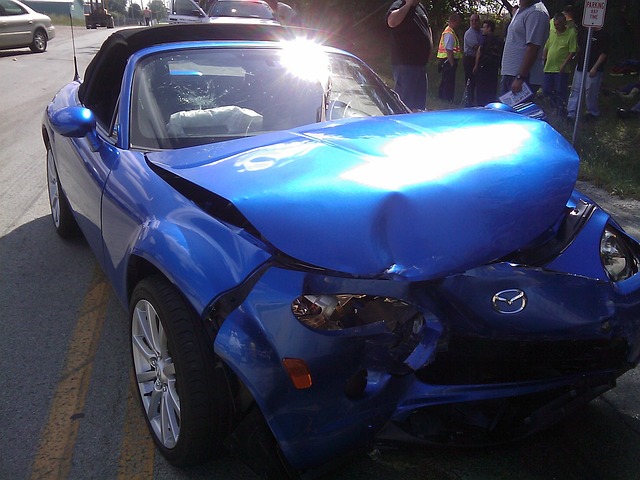Plastic Body Part Repair: Extending Vehicle Lifespan with Innovative Techniques
Plastic body part repair is a specialized automotive service that restores damaged or deformed plast…….
Welcome to an extensive exploration of a groundbreaking medical and technological advancement: Plastic Body Part Repair (PBPR). This field, at the intersection of plastic surgery, biomaterials, and regenerative medicine, focuses on restoring and reconstructing damaged or missing body parts using innovative techniques and materials. As we delve into this article, you will gain insights into the intricate world of PBPR, its global impact, and its potential to transform lives. From historical roots to cutting-edge technologies, we aim to equip readers with a comprehensive understanding of this transformative practice.
What is Plastic Body Part Repair?
Plastic Body Part Repair is a specialized medical discipline aimed at replacing or reconstructing damaged, diseased, or missing body tissues and structures. It involves a multidisciplinary approach, combining surgical expertise, biomaterial science, and regenerative strategies to restore form, function, and aesthetics. PBPR goes beyond traditional plastic surgery by incorporating advanced technologies and techniques to enhance outcomes and improve patient quality of life.
Core Components:
Historical Context:
The roots of PBPR can be traced back to ancient times when natural materials like animal hides and plant fibers were used for skin grafts. However, significant advancements emerged in the 20th century with the development of synthetic biomaterials and the introduction of cell culture techniques. The field gained momentum in the late 1980s and 1990s with breakthroughs in tissue engineering and the successful transplantation of complex tissues, paving the way for modern PBPR practices.
International Influence:
Plastic Body Part Repair has left an indelible mark on global healthcare, particularly in regions with advanced medical infrastructure. Key players include North America, Europe, and Asia-Pacific, where extensive research and clinical trials have led to sophisticated PBPR practices. However, the impact is not limited to these areas; developing countries are also adopting these techniques, improving patient access and outcomes.
Regional Trends:
Market Analysis:
The global Plastic Body Part Repair market is experiencing substantial growth, fueled by increasing incidences of traumatic injuries, congenital defects, and age-related conditions requiring reconstruction. According to a 2021 report by MarketsandMarkets, the market size is projected to grow from USD 35.4 billion in 2021 to USD 64.7 billion by 2026, at a CAGR of 12.7%. Key market drivers include:
Investment Patterns:
Private equity firms and venture capital investors have shown significant interest in PBPR startups, backing innovative technologies and therapeutic approaches. Government grants and public-private partnerships also contribute to funding, especially for clinical trials and regulatory approval processes. The economic impact extends beyond the healthcare sector, with potential job creation and improved patient outcomes leading to increased productivity and quality of life.
Innovations in Biomaterials:
Cellular Therapies and Regenerative Medicine:
Digital Technologies:
Regulatory Frameworks:
The regulatory landscape for PBPR varies globally, with each country establishing its guidelines and approval processes. Key considerations include:
International Collaboration:
Global collaborations and organizations play a pivotal role in harmonizing regulations and promoting best practices. The International Organization for Standardization (ISO) and the Medical Device Regulation (MDR) of the European Union are examples of frameworks that guide PBPR standards worldwide. These efforts ensure consistent quality and safety, fostering international adoption and patient trust.
Main Challenges:
Strategies for Overcoming Challenges:
Case Study 1: Reconstructing Facial Injuries
A young woman suffered severe facial injuries in a motor vehicle accident, causing extensive soft tissue damage and bone fractures. Through a multi-disciplinary approach, surgeons used advanced PBPR techniques:
Results: The patient’s facial symmetry and function were restored, significantly improving her quality of life and psychological well-being. This case highlights the transformative power of PBPR in addressing complex reconstructive needs.
Case Study 2: Pediatric Congenital Defect Repair
A baby born with a rare congenital defect affecting the hands and feet required innovative solutions. Surgeons employed:
Outcome: The child gained full functionality in their hands and feet, enabling them to participate in daily activities without limitations. This success story emphasizes PBPR’s potential in improving the lives of children with congenital anomalies.
Emerging Trends:
Growth Areas:
Strategic Considerations:
Plastic Body Part Repair represents a remarkable fusion of medicine, science, and technology, offering hope and healing to countless individuals worldwide. From its historical roots to the cutting-edge innovations of today, PBPR has undergone a profound transformation, shaping the future of reconstructive and restorative healthcare. As we look ahead, the potential for PBPR to address global health challenges, enhance quality of life, and drive medical advancements is immense.
Q: How does PBPR differ from traditional plastic surgery?
A: While both fields share common goals, PBPR goes beyond cosmetic enhancement. It focuses on reconstructing damaged or missing body parts using advanced techniques, incorporating cell therapies, tissue engineering, and biomaterials to achieve optimal functional and aesthetic outcomes.
Q: Are there any risks associated with PBPR procedures?
A: Like any surgical procedure, PBPR carries risks, including infection, bleeding, and implant rejection. However, strict adherence to sterilization protocols, thorough patient screening, and ongoing research aim to minimize these risks. Long-term follow-up is essential to monitor the success and longevity of PBPR treatments.
Q: Can PBPR be used for both aesthetic and functional restoration?
A: Absolutely. One of the key strengths of PBPR is its versatility. It can restore both form and function, addressing cosmetic concerns while improving a patient’s ability to perform daily activities, such as improved mobility after an injury or enhanced hand functionality in children with congenital defects.
Q: How does 3D printing contribute to PBPR?
A: 3D printing plays a crucial role by enabling the creation of personalized biomaterials and scaffolds tailored to individual patients’ anatomies. This precision enhances surgical planning, improves reconstruction accuracy, and potentially reduces surgery time and complications.
Q: Are there any cultural or societal barriers to PBPR?
A: Cultural attitudes towards body image and aesthetics can influence PBPR acceptance. However, as society becomes more inclusive and tolerant of diverse body types, interest in PBPR for both functional and cosmetic reasons is growing globally. Education and open dialogue are essential to addressing misconceptions and fostering a positive perception of PBPR.

Plastic body part repair is a specialized automotive service that restores damaged or deformed plast…….

Damaged or deteriorating plastic car parts affect both appearance and safety, making regular inspect…….

For top-tier plastic body part repair, the right tools are key. This includes specialized cutting to…….

Plastic body part repair is a specialized technique for restoring damaged automotive panels using ad…….

Plastic body part repair is a specialized process for polypropylene and polyethylene car parts, dama…….

Plastic body part repair is a specialized auto maintenance service that restores damaged or broken p…….